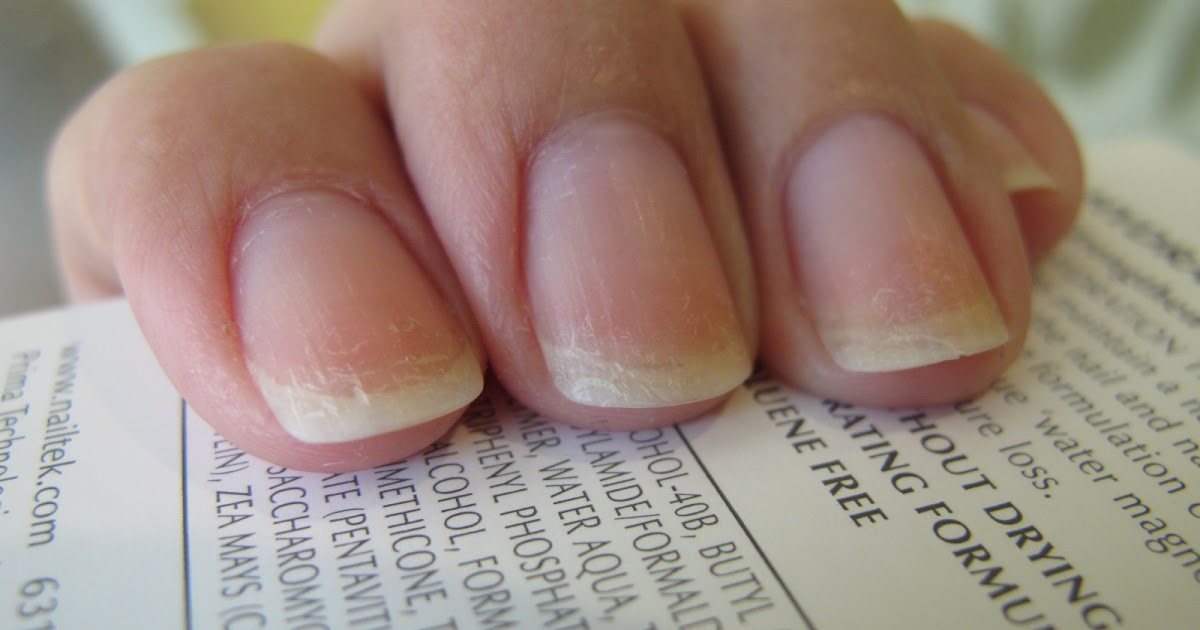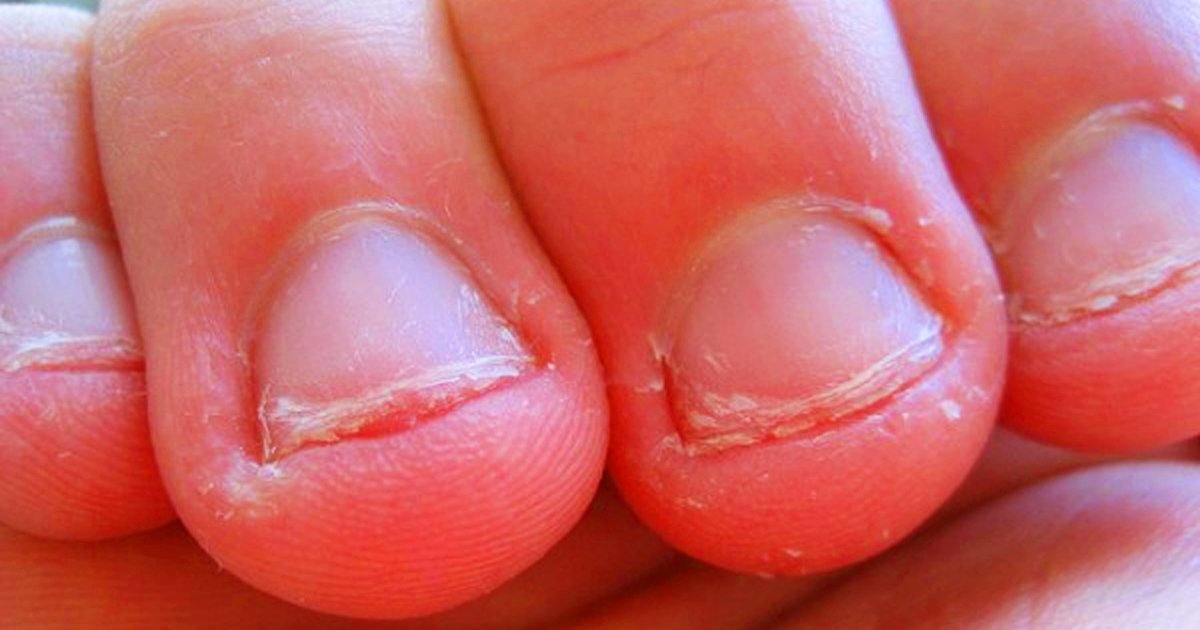What's With These Ridges In My Fingernails?
Fingernails seem so unimportant. They don't seem to serve as anything more than a sign of affluence or working hard. And yet, fingernails may well hold some key evidence that points to the presence of several health conditions individuals and their doctors should investigate. The fingernails are essentially excess proteins expressed through the fingers, so because the nails are living skin cells, they can tell surprising stories. One of the ways in which an individual's fingernails tell a story is in the presence of ridges on their nail. Some of these ridges could be caused by a skin condition (like eczema) whereas other ridges can be caused by vitamin or protein deficiencies (especially zinc, calcium, and vitamin A) or even simple dryness of the skin.
Get the full details on what results in fingernail ridges now.
Vertical And Horizontal Ridges

Vertical ridges, that is, ones that look like bands or striations on the nail that run from the cuticle to the tip of the nail, can be caused by many reasons. These types of ridges often occur as individuals age, when many parts of the cell regeneration and replacement system slow down. Sometimes the presence of vertical ridges is accompanied by a change of texture, brittleness, or color. The presence of these changes to an individua's nails could point to a medical condition such as trachyonychia. Another condition that can cause vertical ridges and even cause them to become spoon-shaped is anemia. This condition is entirely avoidable by ensuring consumption of adequate iron in the diet.
Horizontal ridges on the fingernails can point to the presence of several conditions including diabetes, thyroid disease, mumps, kidney disease, and syphilis. These deep horizontal ridges are called Beau's lines (though they are definitely not pretty). Another cause of horizontal ridges on the fingernail can be chemotherapy. Fingernails can signal other health conditions that are important to pay attention to as well.
Learn more about the causes of fingernail ridges now.
Acute Kidney Disease

An individual's acute kidney disease can cause them to develop characteristic ridges in their nails called Beau's lines, which as discussed are horizontal grooves that run across the entire fingernail plate. These lines are the result of a temporary interruption in the individual's nail growth. Nail growth starts in the nail matrix located under the cuticle. When the growth stops, a horizontal depression is made in the nail. Individuals affected by acute or sudden kidney disease will experience Beau's lines on all of their fingernails and even their toenails. Individuals who have kidney disease experience an accumulation of nitrogen waste products in the bodies, which can trigger changes in the toe and fingernails. This buildup is also partly responsible for another condition of the nails that causes ridges called koilonychia. Koilonychia is characterized by nails that have ridges and are spoon-shaped that take on a concave appearance. This type of manifestation in the nails is often associated with iron-deficiency anemia, a prevalent complication that occurs individuals affected by kidney disease.
Get more detailed information about what causes fingernail ridges now.
Trachyonychia

Trachyonychia is a condition of the nails that affects how an individual's nail matrix grows and functions. Patients affected by trachyonychia have finger and toenails that have a distinct texture to their surface. The texture of the nails in these individuals has been described as rough or similar to the feel of sand-paper. Nails of affected individuals also appear with long and straight vertical lines that are variable in their height, and they extend down the length of the patient's nail. The nails become weak and brittle as this condition progresses. This malfunction causes them to eventually split in the places where the ridges are located when the nail meets the free margin. This cause of nail ridges is a more common occurrence in males and school-aged children. Trachyonychia may occur in one or all twenty of the affected individual's nails. This condition has also been associated with diseases including psoriasis, atopic dermatitis, vitiligo, lichen planus, eczema, alopecia areata, ichthyosis vulgaris, and immunoglobulin A deficiency.
Read more about what conditions can result in fingernail ridges now.
Peripheral Vascular Disease

A blood circulation disorder called peripheral vascular disease can cause an individual's nails to develop abnormal ridges. Peripheral vascular disease is an umbrella term used to describe any disorder or disease of an individual's circulatory system that is not in the heart and brain. This disease causes a gradual build-up of fatty material inside of the blood vessels. This fatty material blends with substances such as scar tissue and calcium to harden and form plaques. The plaques can continue to grow and result in an obstruction in the flow of blood through the vessel. They may also break free and become lodged in the vessel, which causes it to become obstructed. When the blood cannot flow through blood vessels in an affected limb in the body due to a blockage, the cells in that region do not receive enough oxygen to function. Part of the function of the cells in the body is to grow and multiply. However, the cells that form an individual's hair and nails are unable to grow properly in the conditions of deficient oxygen concentrations in the blood. This malfunction leads to the appearance of Beau's ridges on the affected individual's nails when the poor oxygen state temporarily stops nail growth.
Continue reading to reveal more details on what causes ridges in fingernails now.
Thyroid Disease

Thyroid disease describes a condition in which an individual has a thyroid gland that does not function properly. A patient with an under active thyroid can experience manifestations that affect their nails, hair, and skin. Individuals who have a deficiency of a substance called selenium in their body are prone to developing vertical ridges in the nails. Selenium is required for the thyroid to convert a specific inactive hormone to its active form so the individual's metabolism can be regulated appropriately. Because it cannot convert this specific hormone to its active state, the thyroid gland doesn't secrete enough thyroid hormone. When there are low thyroid hormone levels in the body, the patient is considered to have thyroid disease. An under active thyroid causes the patient to have reduced blood circulation throughout the body, making it more difficult for the cells that produce the nails and hair to receive the nutrients they require. An under active thyroid also impairs the ability of the body to properly synthesize proteins due to the slowed metabolism. Adequate protein synthesis is essential for the formation of healthy hair, skin, and nails. Protein synthesis also allows the nails to grow stronger. The result of the thyroid malfunction is weak and brittle nails with vertical ridges.
Uncover a common cause of fingernail ridges now.
Aging

Vertical ridges in an older individual's nails can simply be attributed to their natural aging process. When an individual ages, their skin, hair, and nails are exposed to factors that cause them to become increasingly dry. Repeated hand washing, the application and removal of manicures, cleaning without gloves, and excessive wear over time cause the nails to lose their ability to hold onto moisture. In addition, the process that occurs in an individual's skin and nails that replaces cells that have died or shed off becomes less efficient as they grow older. Instead of a positive or level balance of cell production and cell loss a younger individual has, an older individual begins to experience a negative correlation with more cell loss than the number of cells their body is producing. This process is not only specific to the nails and skin but many other types of cells in the body as well. This mechanism causes the nails to become weak and develop vertical ridges that make their texture feel rough. In addition, individuals of advanced ages are more prone to developing medical conditions and diseases known to contribute to the formation of such ridge abnormalities in the nails.
Uncover more details on reasons for nail ridges and other nail issues now.
Nail Trauma

If there has been recent trauma, like banging or hitting the fingernails against something or falling, brown or red spots might form under the nail. Injuries that result in a torn or crushed nail, a cut through the nail (ragged or clean), or bleeding through the nail should be seen by a doctor immediately. But if no trauma has occurred, and red, black, or dark brown spots appear under the nail, it might be a good idea to visit the doctor to determine a cause. Sometimes, trauma to a fingernail can damage it in such a way that results in ridges forming during the healing process. In these cases, it's often a matter of letting the nails grow out and trimming them as this happens.
Discover more about fingernail ridges and other nail issues now.
Change In Color

Any sudden change in the color of a fingernail or toenail should be followed by a doctor's visit. The doctor will be able to examine the nails and ask questions about other symptoms. Armed with this information, the doctor will be able to decide what, if any, additional tests are deemed necessary. If the doctor suspects nutritional deficiencies, diabetes, or kidney disease they will likely recommend blood and urine tests. The doctor could examine the nail and decide whether it's caused by melanoma or endocarditis. Alternatively, the doctor might recommend a dermatologist to help treat the nail if they suspect a skin condition is the root of the problem.
Get the details on treating fingernail ridges now.
Treating Nail Ridges

Before starting a beauty routine up again and getting the nails done at the local nail salon, individuals should make sure to take up the treatment their physician or dermatologist recommends. If directed, they should take iron and vitamin supplements to increase their overall health and vitality. They can use hand moisturizers or topical ointments to treat and manage eczema. Individuals should avoid the use of hand sanitizer gels, which can dry already damaged skin and nails. Patients should follow the doctor's recommendations to control their blood sugar if diabetes is the cause of their horizontal ridges.
Individuals should take good care of their hands and nails, and wait until they have the go-ahead from the dermatologist if they choose to buff and polish their nails. Remember, taking care of one's nails is not being vain, it's an important part of self-care.